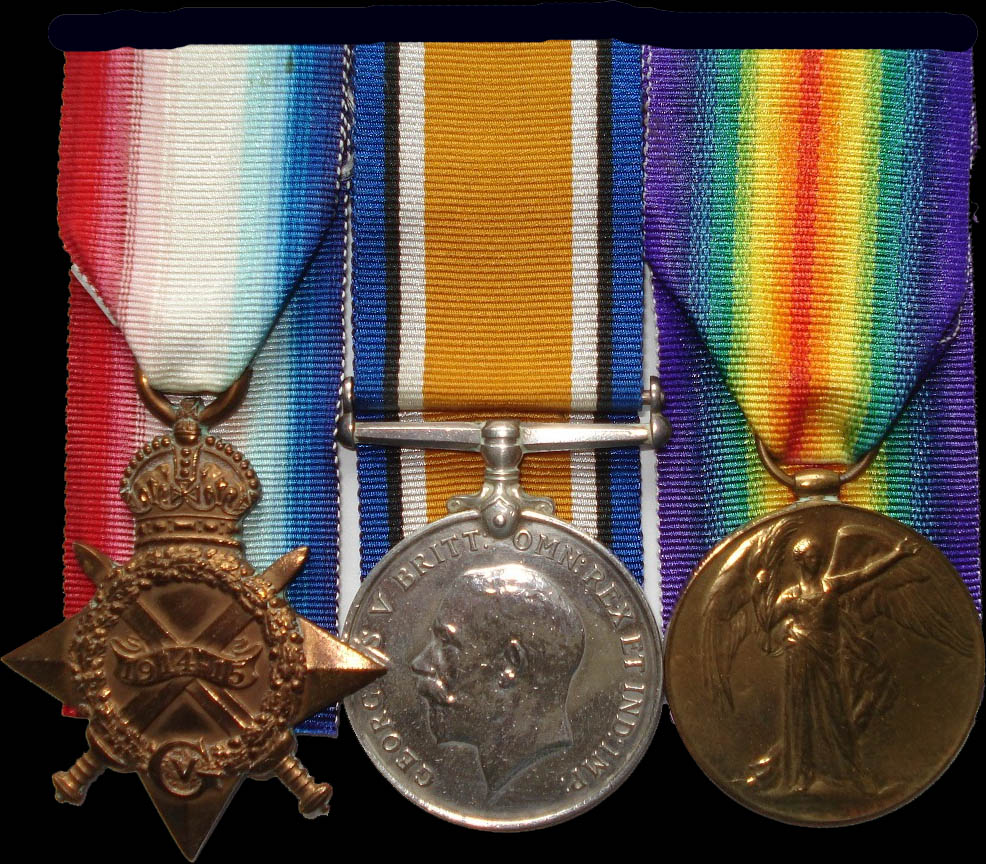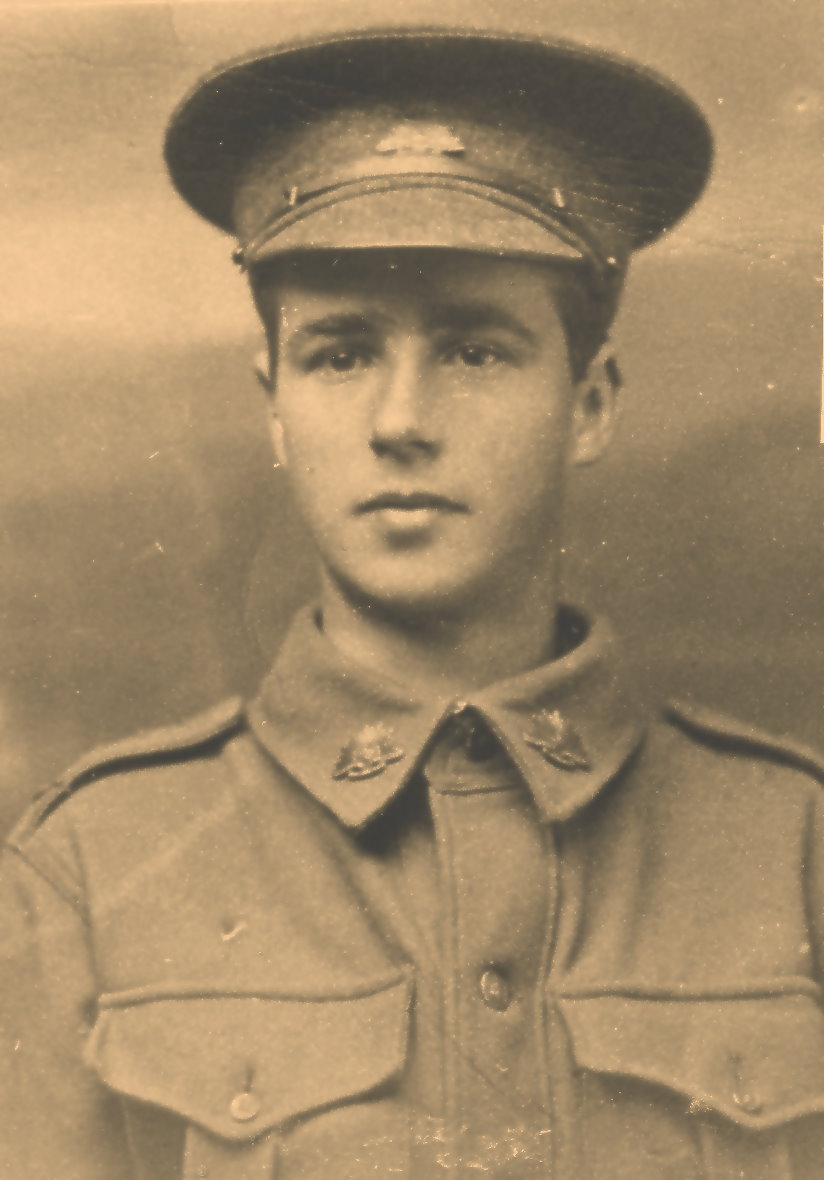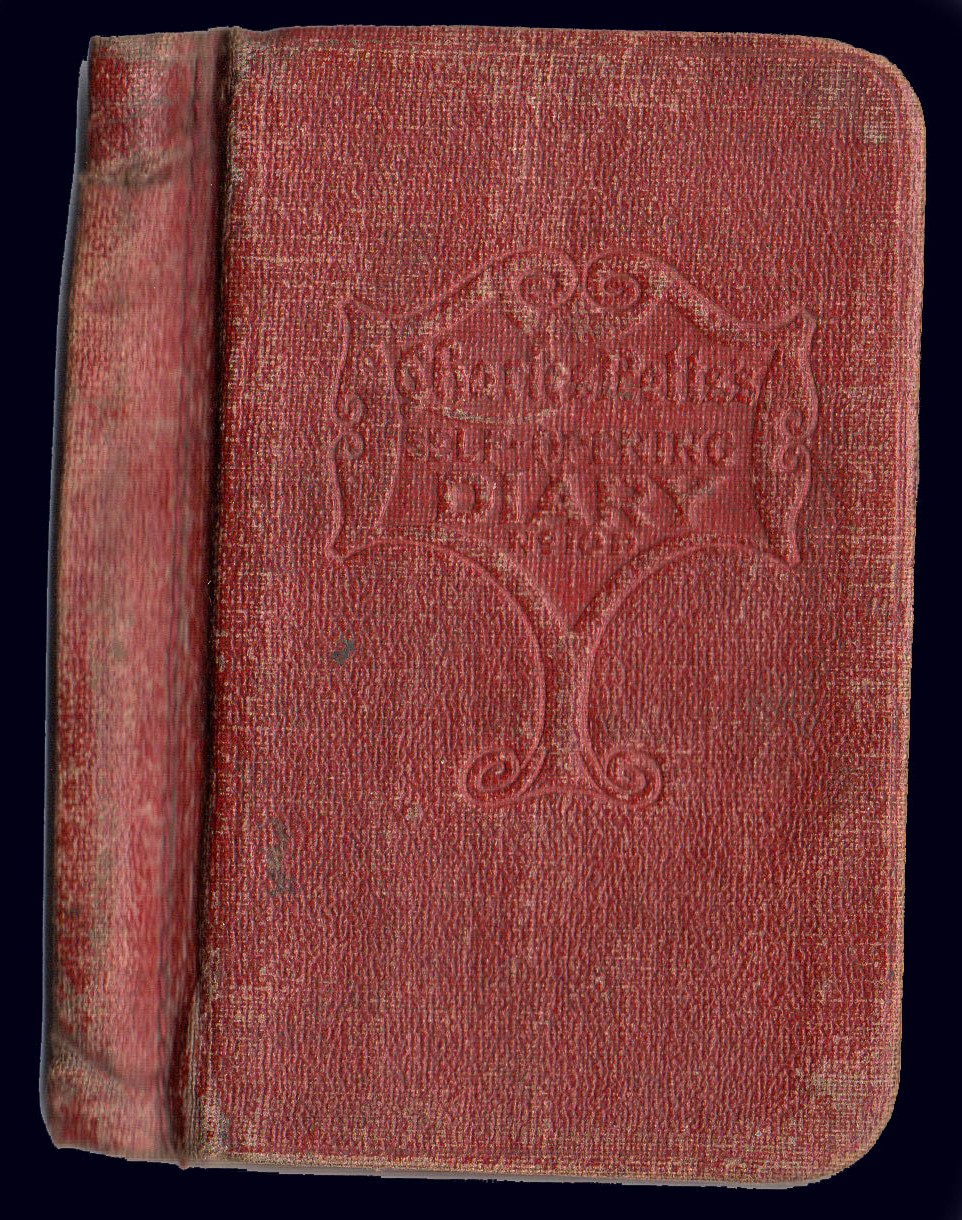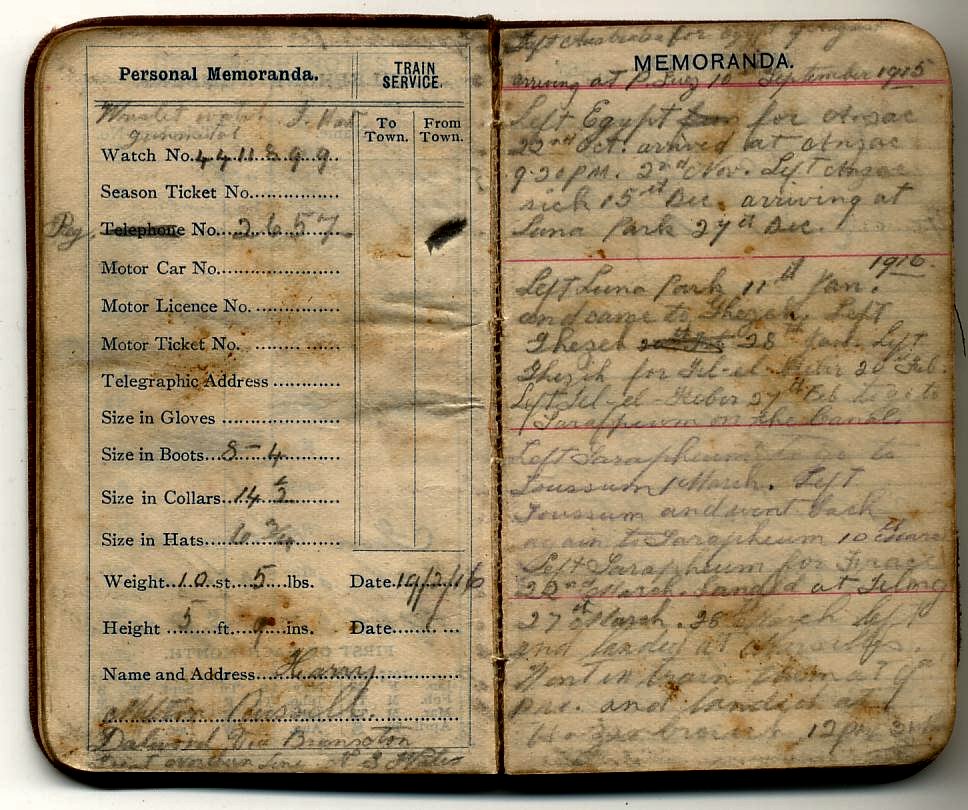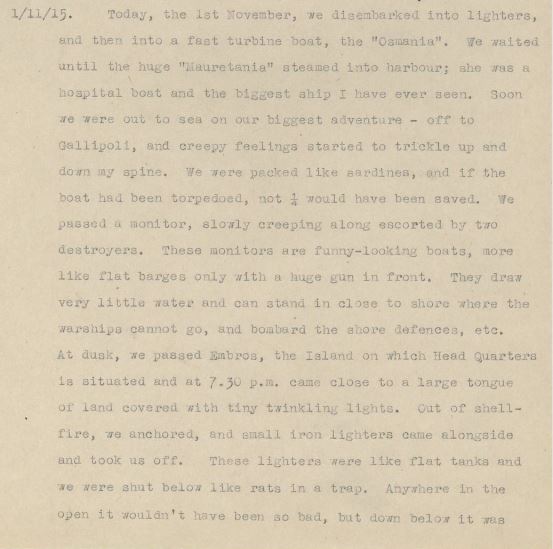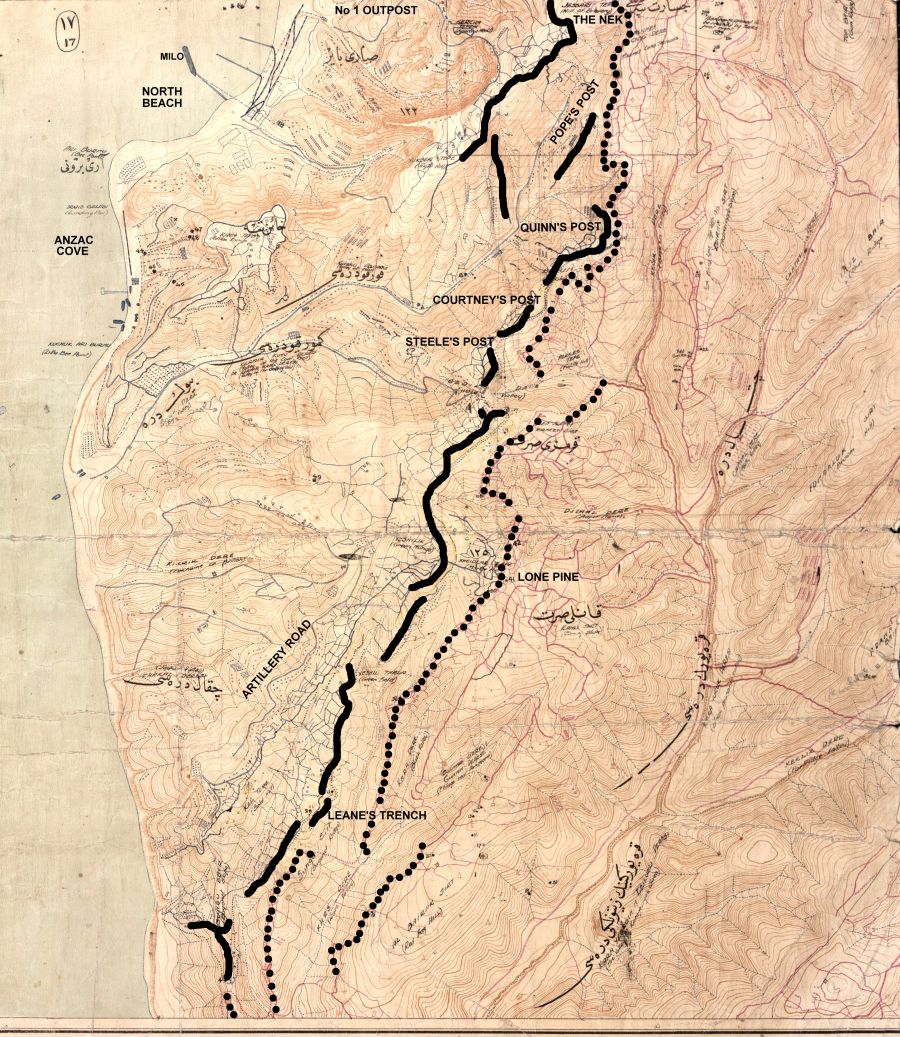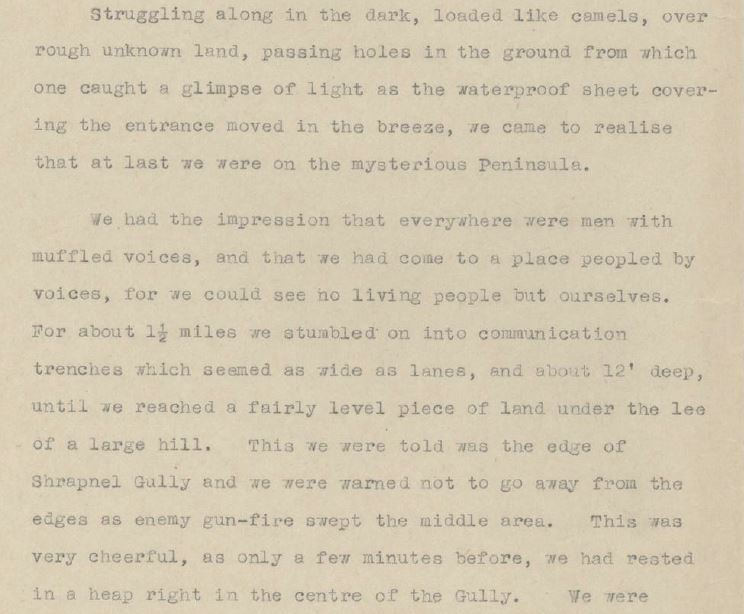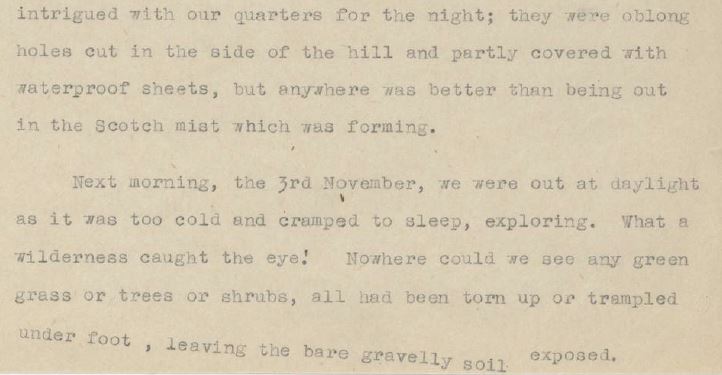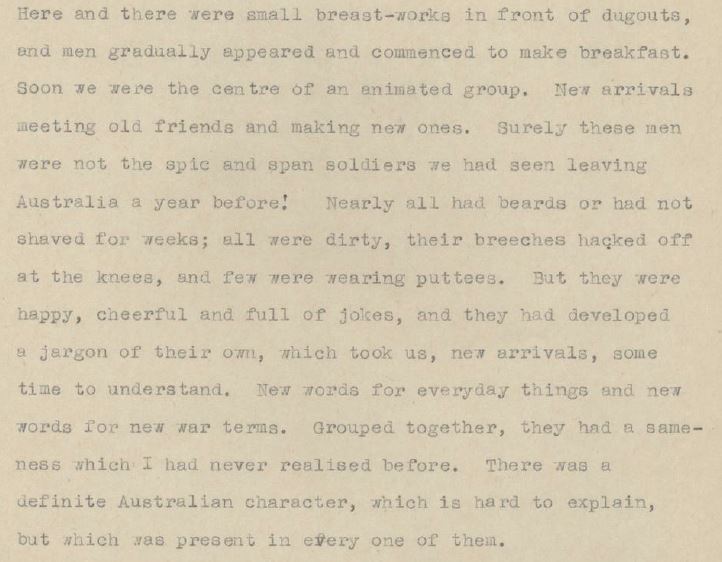1st Infantry Battalion Gallipoli, Egypt, France and Belgium 1915-16 3rd Machine Gun Battalion France 1918
Harry Russell
The British Army cap was favoured by many Australians heading off to war. Australians soon became to prefer the individuality of the slouch hat however. |
Home
1st Australian Infantry Battalion
(AWM)
The battalion was raised within a fortnight of the declaration of war in August 1914 and embarked just two months later. After a brief stop in Albany, Western Australia, the battalion proceeded to Egypt, arriving on 2 December. The battalion took part in the ANZAC landing on 25 April 1915 as part of the second and third waves, and served there until the evacuation in December. Its most notable engagement at Gallipoli was the battle of Lone Pine in August. Roll call of D Company, 1st Battalion, at Hell Spit after the fighting at the landing. The bodies of fallen Australian soldiers lie on the ground over which the 1st Battalion advanced in its attack on Lone Pine. During 1916, Harry Russell's commanding officer in 1st Battalion D Company was Capt. Price. His diary makes occasional references to him.
Philip Howell-Price had been an officer of D Company, 1st Battalion since being promoted to Lieutenant the day after the first landings at Gallipoli. Mentioned twice for 'acts of conspicous gallantry' during these early days at Gallipoli, he received severe wounds during the battle of Lone Pine, not returning to his Company until just before the withdrawal in December. It is unlikely that Harry had much to do with Howell-Price until he was made Captain of D Company in Egypt prior to embarking for the Western Front in March 1916.
|
On July 30 1915 it was decided an Australia Day would be celebrated across the country and funds would be raised to help the Australia Division of the Red Cross continue to provide their services. Ribbons were sold as part of the fundraising. Examples of these ribbons can be seen in this photo of Harry with his family. On Harry's immediate left is his brother in law Herbert Leslie Prior. Herbert Leslie Prior didn't survive the war. Find out more HERE 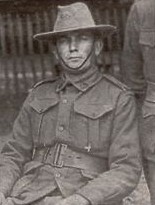
Left Australia for Egypt 9 August 1915
The troopship 'RUNIC' 
|
